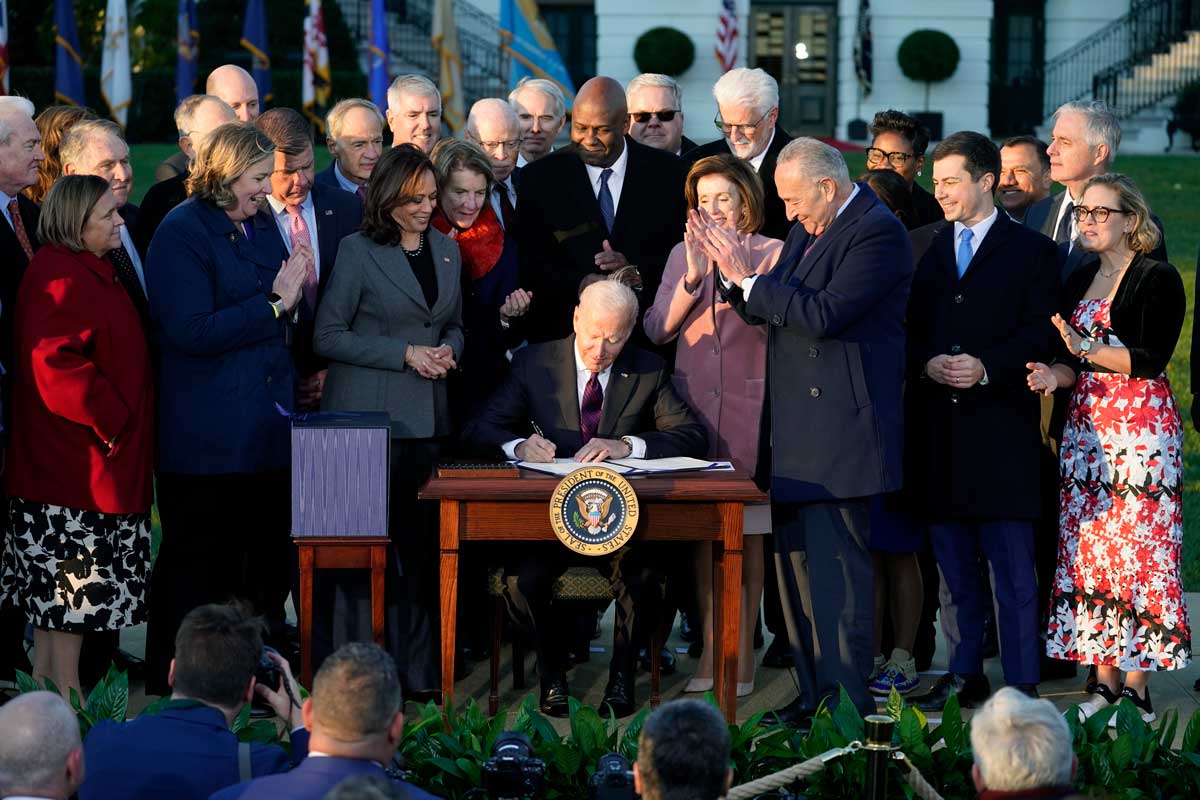
President Joe Biden signs the "Infrastructure Investment and Jobs Act" during an event on the South Lawn of the White House, Monday, Nov. 15, 2021, in Washington. (AP Photo/Evan Vucci)
On Monday, November 15, President Biden signed the Bipartisan Infrastructure Bill into law as the impressive group of Republican and Democratic Senators and Representatives who crafted and supported it looked on. The more than 36,000 members of CommonSense American are proud to have played on important role at each step in the long process.
Some of the early proposals included investments that many members of CommonSense American said weren’t really infrastructure. That input helped the Senate produce the Bipartisan Infrastructure Bill which focused on “hard infrastructure” like roads and bridges, public transit, water systems, and broadband.
On August 9, USA Today published Executive Director Keith Allred’s piece highlighting our findings that the Bipartisan Infrastructure Bill received substantially more support than President Biden’s original American Jobs Plan or the Senate Republicans’ Plan. On August 10, the Senate passed the bill on a 69-30 bipartisan vote.
Then, some members of the House said they wouldn’t vote for the Bipartisan Infrastructure Bill without a vote on the Reconciliation Bill with Democratic spending priorities. On the morning of November 11, The Hill published Keith Allred’s piece about the overwhelming majority of CommonSense Americans who believed that infrastructure should not be held hostage to the Democratic spending priorities bill. Just before midnight that day, the House passed the Bipartisan Infrastructure Bill. In the end, only six progressive Democrats voted against the infrastructure bill because the reconciliation bill has not yet been voted on, and 13 Republicans voted for the infrastructure bill.
Along the long and winding way, we engaged 42 Senators and 178 Representatives who come from both parties with our results. The views of the thousands of CommonSense Americans who weighed in played an important role in this rare example of Congress acting in a bipartisan way to make commonsense investments in our nation’s infrastructure.

